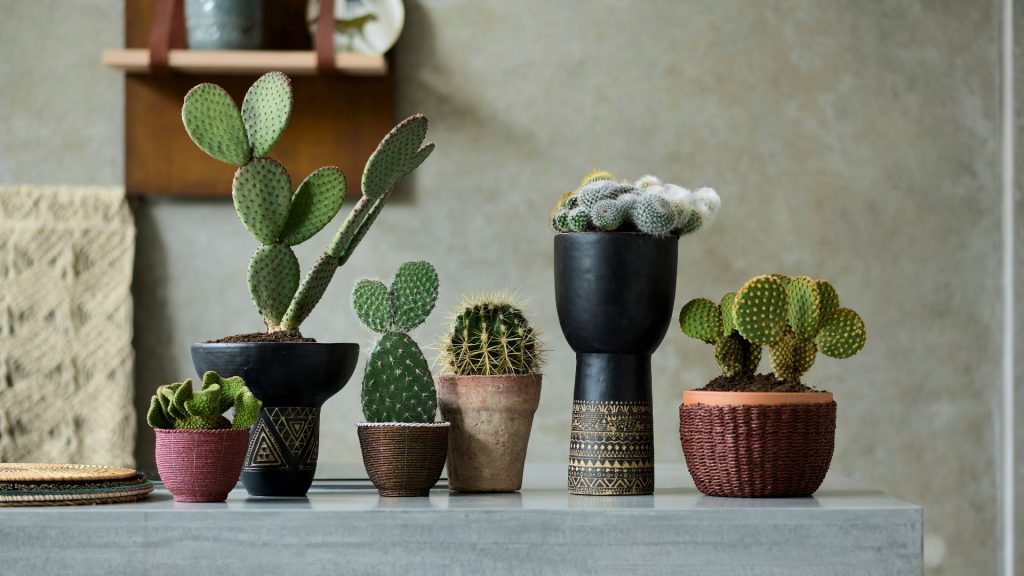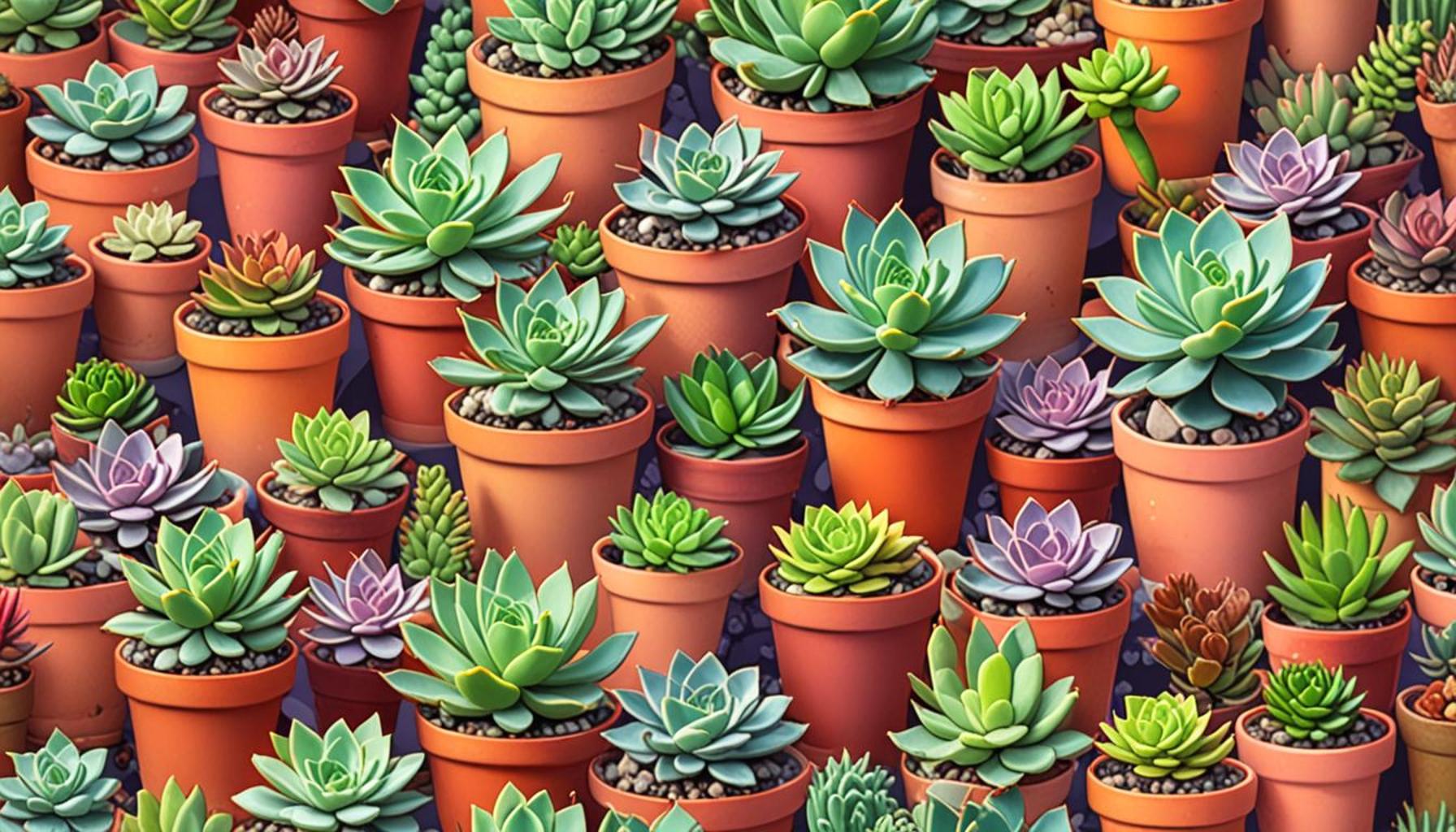The Best Types of Plants for Gardening Beginners

Exploring the World of Gardening for Beginners
Starting a garden can be an exciting and rewarding venture filled with opportunities for creativity and discovery. However, for those new to gardening, the process can sometimes feel overwhelming, especially when it comes to choosing the right plants. Selecting varieties that are easy to grow and maintain is essential for beginner gardeners to ensure a successful gardening experience.
Top Plant Options for New Gardeners
To assist novices in their gardening journey, here are some top plant options that are ideal for beginners:
- Herbs: Herbs like basil, parsley, and mint are excellent choices for beginners. These plants not only require minimal care — often thriving in pots or a small patch in the garden — but they also enhance your culinary experiences. Basil, for instance, grows exceptionally well in full sunlight and can be harvested frequently, promoting continuous growth. Meanwhile, parsley and mint can tolerate less-than-ideal conditions and are versatile additions to salads or beverages, delighting both your taste buds and your gardening efforts.
- Flowers: Bright and cheerful flowers such as marigolds and zinnias can be perfect for novice gardeners. These vibrant plants not only add color to your garden but also serve a vital role in attracting pollinators like bees and butterflies, which are essential for plant reproduction. Marigolds are particularly resilient, thriving in various soil types and conditions, while zinnias are known for their quick growth and ability to bloom from summer until frost.
- Vegetables: If you’re eager to produce food from your garden, consider starting with vegetables like radishes, lettuce, and green beans. These crops are known for their fast growth rates, making them incredibly rewarding for a beginner. For instance, radishes can be ready to harvest in as little as three weeks, while lettuce can be sown directly into the soil and grows well in cooler temperatures, allowing for multiple harvests throughout the seasons. Green beans are another simple choice, often producing abundantly with relatively little effort.
These plants not only offer a gentle introduction to gardening but also foster an enriching relationship with nature. Understanding the essential requirements for each type of plant — such as sunlight, watering, and soil type — will help mitigate early frustrations and promote a successful gardening experience.
Considerations Based on Local Climate
Beginner gardeners often find success by choosing plants that align with their local climate and gardening zone. The United States features a diverse range of growing zones, from the colder northern climates to the warmer southern regions. Selecting plants that are well-suited for your specific zone can significantly increase your chances of cultivating a flourishing garden. Websites like the USDA Plant Hardiness Zone Map can serve as a helpful resource, guiding you in choosing the best plants that adapt well to your area.
As you embark on this delightful journey of gardening, you will uncover the joy of nurturing living things and the enriching satisfaction of watching them thrive. Embrace the process with confidence, experiment with different plants, and before long, you’ll cultivate a personal space that reflects your unique personality and passion for the natural world. Your garden awaits — dive in, and discover the bountiful benefits of this rewarding pastime!

DISCOVER MORE: Click here to learn how to enhance your soil quality
Choosing the Right Plants to Begin Your Gardening Adventure
When it comes to gardening for beginners, selecting the right plants can make all the difference in creating a successful and enjoyable experience. The key is to choose plants that are forgiving, resilient, and adaptable to varying growing conditions. Here are several plant categories that are particularly suited for novice gardeners, providing an inviting introduction to the world of horticulture.
Easy-to-Grow Succulents
Succulents are a fantastic choice for beginners due to their low maintenance requirements and stunning variety. These plants retain water in their leaves, making them ideal for gardeners who may occasionally forget to water. Varieties such as aloe vera, jade plant, and hens and chicks not only bring vibrant aesthetics to your space but also thrive in sunny locations with minimal care. They can be planted in individual pots or grouped together in decorative arrangements, making them versatile for both indoor and outdoor gardening.
Fruits for the Patient Gardener
For those who might be interested in growing their own fruits, starting with strawberries, raspberries, and blackberries can be particularly fulfilling. These fruits can be grown in small spaces and containers, perfect for urban gardeners. Strawberries can bear fruit in their first year, while raspberries and blackberries may take a little longer, yet their care is straightforward. They prefer full sun and benefit from regular watering, making them reasonable choices for anyone willing to invest a bit more time into their garden.
Robust Perennials
Perennials are a great addition to any beginner’s garden because they return year after year, minimizing the need for replanting. Plants like daylilies, coneflowers, and hostas not only require little attention once established, but they can also add lasting beauty and diversity to your landscape. Daylilies, in particular, come in a variety of colors and can thrive in a range of soil types. Meanwhile, coneflowers are drought-resistant and attract beneficial insects, enhancing the overall health of your garden ecosystem.
Grass Varieties for Ground Covers
If you’re also looking to cover ground quickly, consider starting with easy-to-manage grass varieties like fescue or Bermudagrass. Both are adaptable to different climatic conditions across the United States and establish a solid lawn without the headache associated with more delicate grass types. Fescue thrives in cooler regions, while Bermudagrass is more suitable for warmer climates, making it essential to match your selection to your local environment.
As you explore these plant options, it’s essential to understand their growth habits and needs, such as sunlight, airflow, and water requirements. This foundational knowledge sets the stage for a fruitful gardening experience and can inspire deeper exploration into the world of plants and their ecosystems.
The Best Types of Plants for Gardening Beginners
When venturing into the world of gardening, beginners should prioritize plants that not only thrive under basic care but also provide immediate gratification. This approach fosters confidence and encourages further exploration into horticulture. Here, we delve into categories of plants that are both forgiving and rewarding for novice gardeners.
| Plant Type | Benefits for Beginners |
|---|---|
| Succulents | Low maintenance and require minimal watering, making them perfect for busy individuals. |
| Herbs | Versatile in culinary uses and thrive indoors or outdoors, offering a sensory gardening experience. |
| Marigolds | Attractive flowers that deter pests, providing an ecological advantage while enhancing garden aesthetics. |
| Spider Plants | Air-purifying qualities and adaptability, contributing to indoor plant health. |
Each of these categories highlights not only their specific gardening attributes but also how they can enhance the overall gardening experience for beginners. Engaging with these plants can spark a lifelong passion for gardening, making the transition from novice to experienced gardener exciting and rewarding. Exploring other types of plants as confidence grows will be the next step in their gardening journey.
DISCOVER MORE: Click here to learn how to grow climbing plants in tight spaces
Building Your Garden with Vegetables and Herbs
In addition to the picturesque beauty of flowers and the vibrancy of fruits, growing your own vegetables and herbs can be a rewarding endeavor for novice gardeners. Not only do they provide fresh produce, but they also allow you to dive deeper into gardening practices and gain insight into how to cultivate edible plants. Here are some vegetable and herb recommendations that are particularly beginner-friendly.
Beginner-Friendly Vegetables
Vegetables that thrive with minimal care are perfect companions for beginner gardeners. Crops such as radishes, carrots, and zucchini are not only easy to grow but also yield a bountiful harvest in a relatively short time. Radishes can germinate within 3 to 7 days, and with proper spacing, they grow quickly and are ready for harvest in just a few weeks. Carrots, although taking a bit longer, can be grown in various soils and are low-maintenance once established. Zucchini, on the other hand, tends to be quite prolific and can lead to a generous garden yield that may require sharing with neighbors!
Herbs for Flavor and Healing
Herbs such as basil, parsley, and mint are ideal for beginner gardeners looking to enhance their culinary creations. Basil grows well in containers and can flourish indoors or outdoors, while parsley offers the added benefit of being a biennial plant, meaning it can grow for two seasons. Mint is remarkably easy to grow but should be contained in pots since it can become invasive. These herbs not only add flavor to dishes but can also be dried for later use, making them a great investment for any aspiring cook.
Flowers that Attract Pollinators
Including flowering plants in your garden is not just about aesthetics; it’s also about attracting essential pollinators like bees and butterflies. Choosing easy-to-grow flowers such as marigolds, cosmos, and sunflowers can enhance your garden’s biodiversity. Marigolds are particularly known for their pest-repellent qualities and bloom continuously, while cosmos produce beautiful blooms throughout the summer months. Sunflowers offer a unique element with their towering stalks and large, cheerful heads, and they can be grown in both backyards and community gardens.
Container Gardening for Flexible Spaces
For beginners with limited space, container gardening provides a flexible and pragmatic solution. Almost any plant can thrive in containers given the proper care, with options ranging from classic flowers and herbs to vegetables and fruits. Large pots or raised beds can accommodate a variety of plants, and they also allow for easier maintenance and pest management. Start with durable pots that have drainage holes, and select an appropriate soil mix to support healthy growth.
By incorporating a mix of vegetables, herbs, and flowers, a beginner gardener can create a thriving ecosystem in their garden. Understanding the environmental needs and growth characteristics of each plant will ultimately lead to a more rewarding and engaging gardening experience, fostering a sense of connection with nature as you watch your garden flourish. Happy gardening!
DON’T MISS OUT: Click here for essential tips
Conclusion: Embrace Your Gardening Journey
Whether you’re drawn to vibrant flowers, flavorful herbs, or delicious vegetables, starting a garden as a beginner can be a fulfilling and enlightening experience. The transition from a novice to a seasoned gardener is rooted in your choice of plants. By selecting easy-to-grow varieties like marigolds, radishes, basil, and zucchini, you can ensure that your first gardening attempts are successful and enjoyable.
Gardening not only enhances your outdoor space but also provides a much-needed escape into nature. It teaches patience and perseverance as you nurture each plant to its full potential. Plus, container gardening offers innovative ways to adapt to limited space, making it accessible for urban dwellers. Regardless of your environment, a quaint container or a small backyard can transform into a lush green haven.
Remember to embrace trial and error; it’s a vital part of the learning process. Don’t hesitate to explore new plant varieties and techniques, and consider joining local gardening communities or resources for further support and inspiration. As you watch your plants flourish, you’ll find a deeper appreciation for nature and perhaps even discover a new passion. So, gather your tools, select your plants, and allow your gardening journey to begin—you may just cultivate a lifelong love for green spaces!



